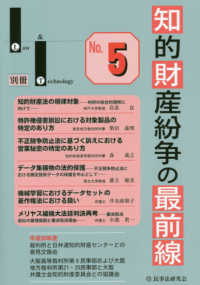- ホーム
- > 洋書
- > ドイツ書
- > Mathematics, Sciences & Technology
- > Technology
Description
(Text)
Pipeline transport is the transportation of goods through a pipe. Most commonly, liquid and gases are sent, but pneumatic tubes that transport solid capsules using compressed air have also been used. As for gases and liquids, any chemically stable substance can be sent through a pipeline. Therefore sewage, slurry, water, or even beer pipelines exist; but arguably the most valuable are those transporting fuels: oil (oleoduct), natural gas (gas grid) and biofuels Dmitri Mendeleev first suggested using a pipe for transporting petroleum in 1863. For natural gas, pipelines are constructed of carbon steel and varying in size from 2 inches (51 mm) to over 60 inches (1,500 mm) in diameter, depending on the type of pipeline. The gas is pressurized by compressor stations and is odorless unless mixed with a mercaptan odorant where required by a regulating authority.
(Author portrait)
Omidvar, HedayatHe is head of Communication Affairs with Science and Research Centers, Research and Technology Department with the National Iranian Gas Company. He is a member of IGU Marketing Committee.Letter of Commendation As the Exemplary Research Expert Received From the Deputy Petroleum Minister and Managing Director of NIGC 2008.








